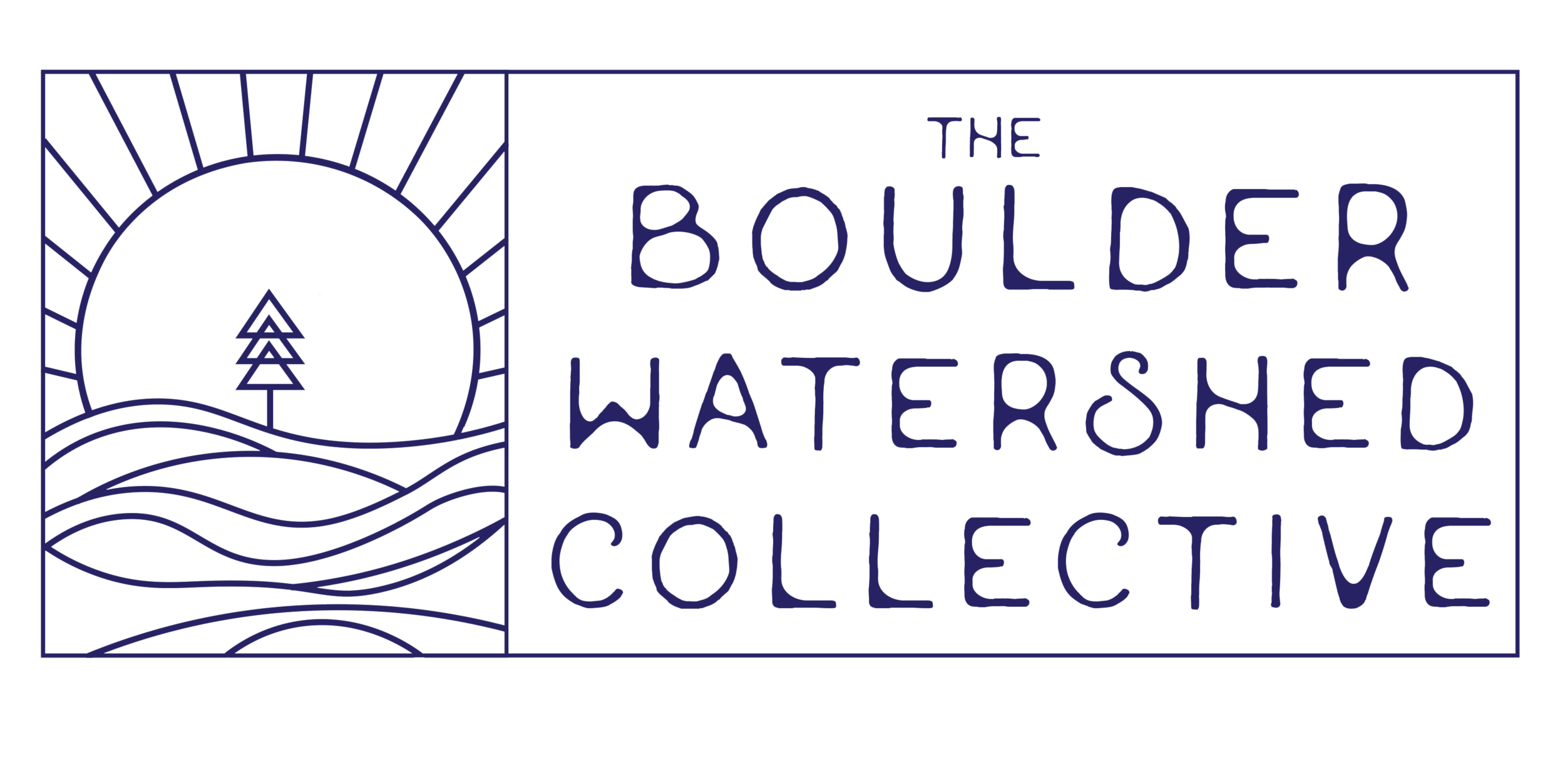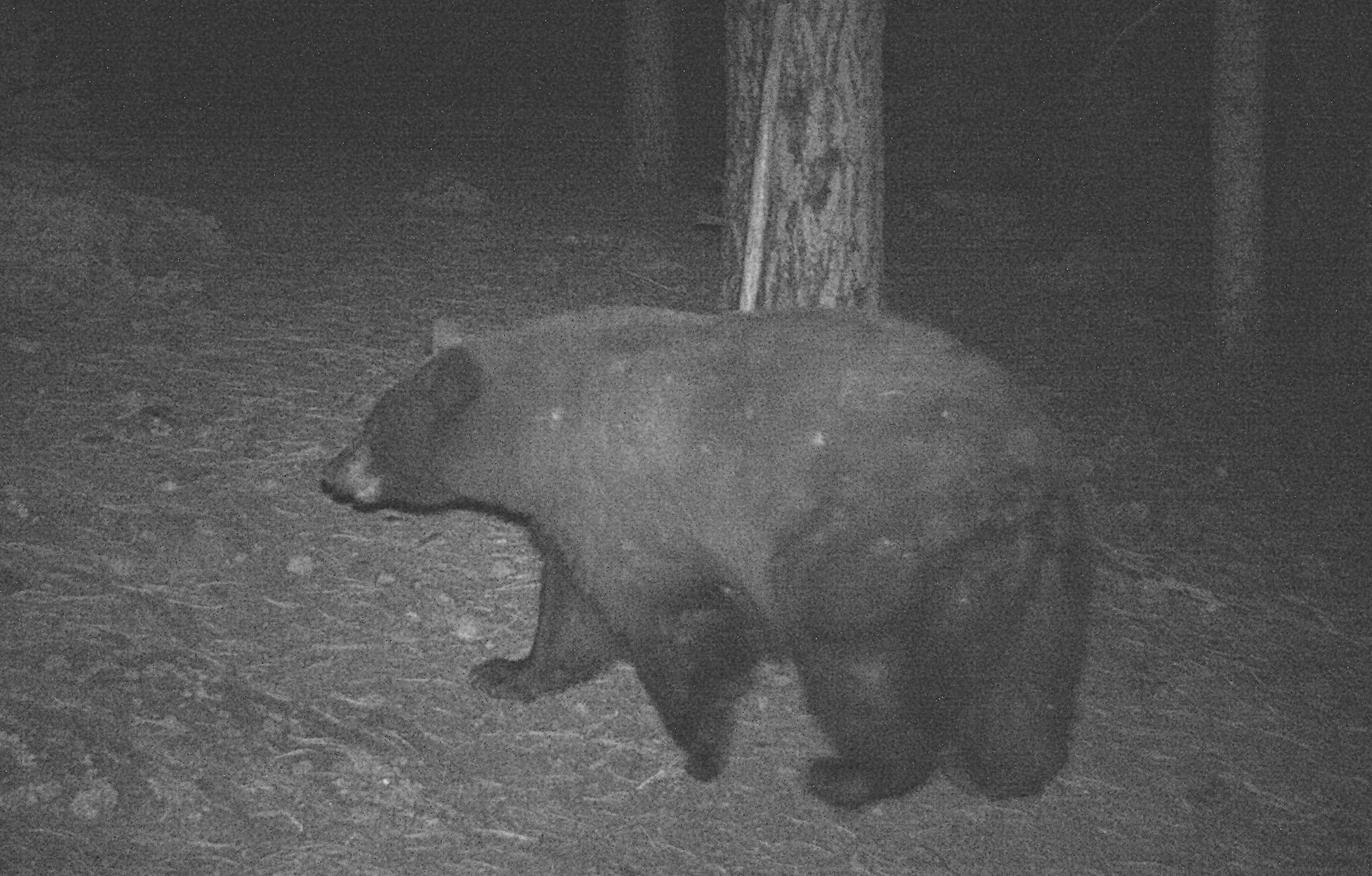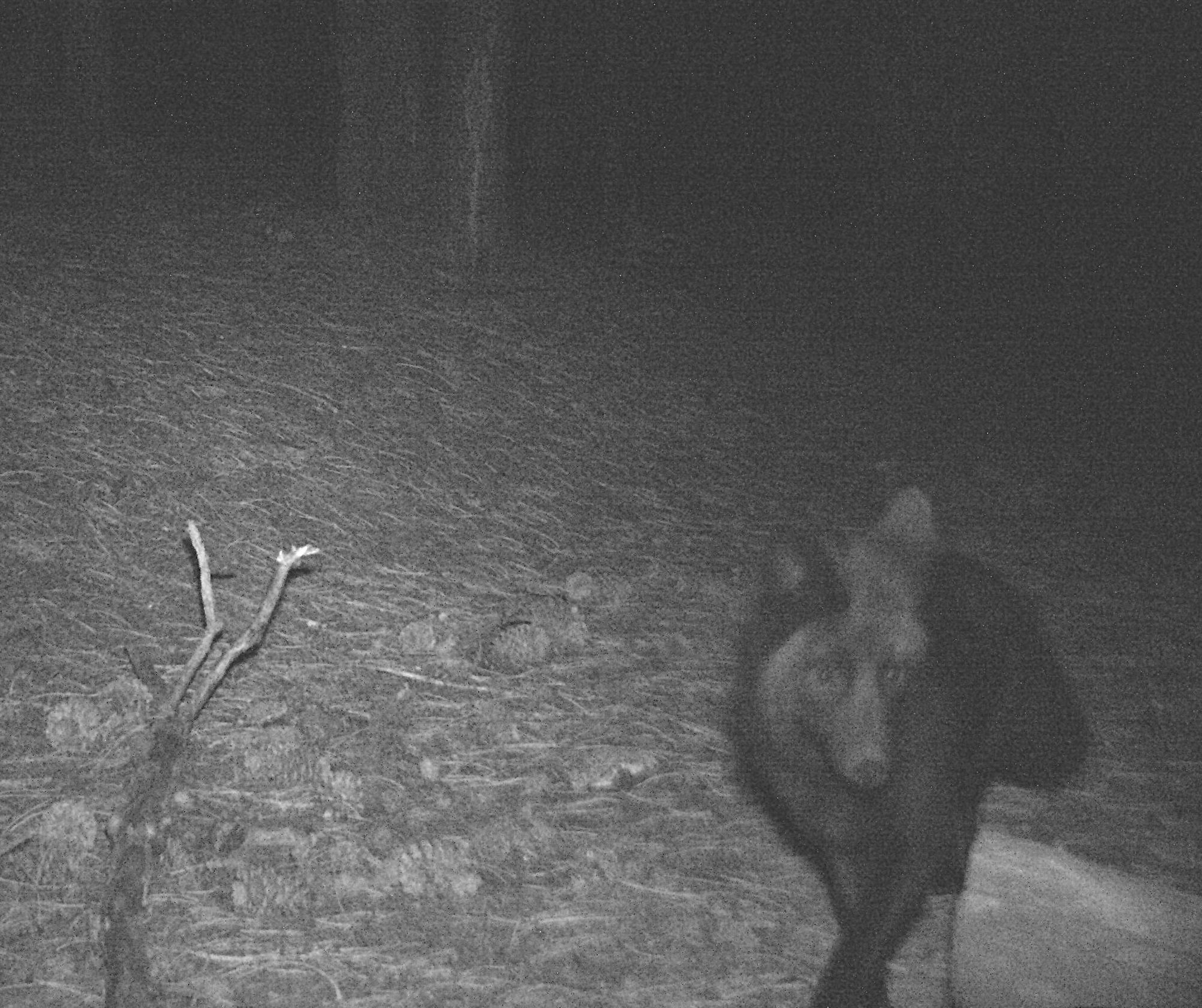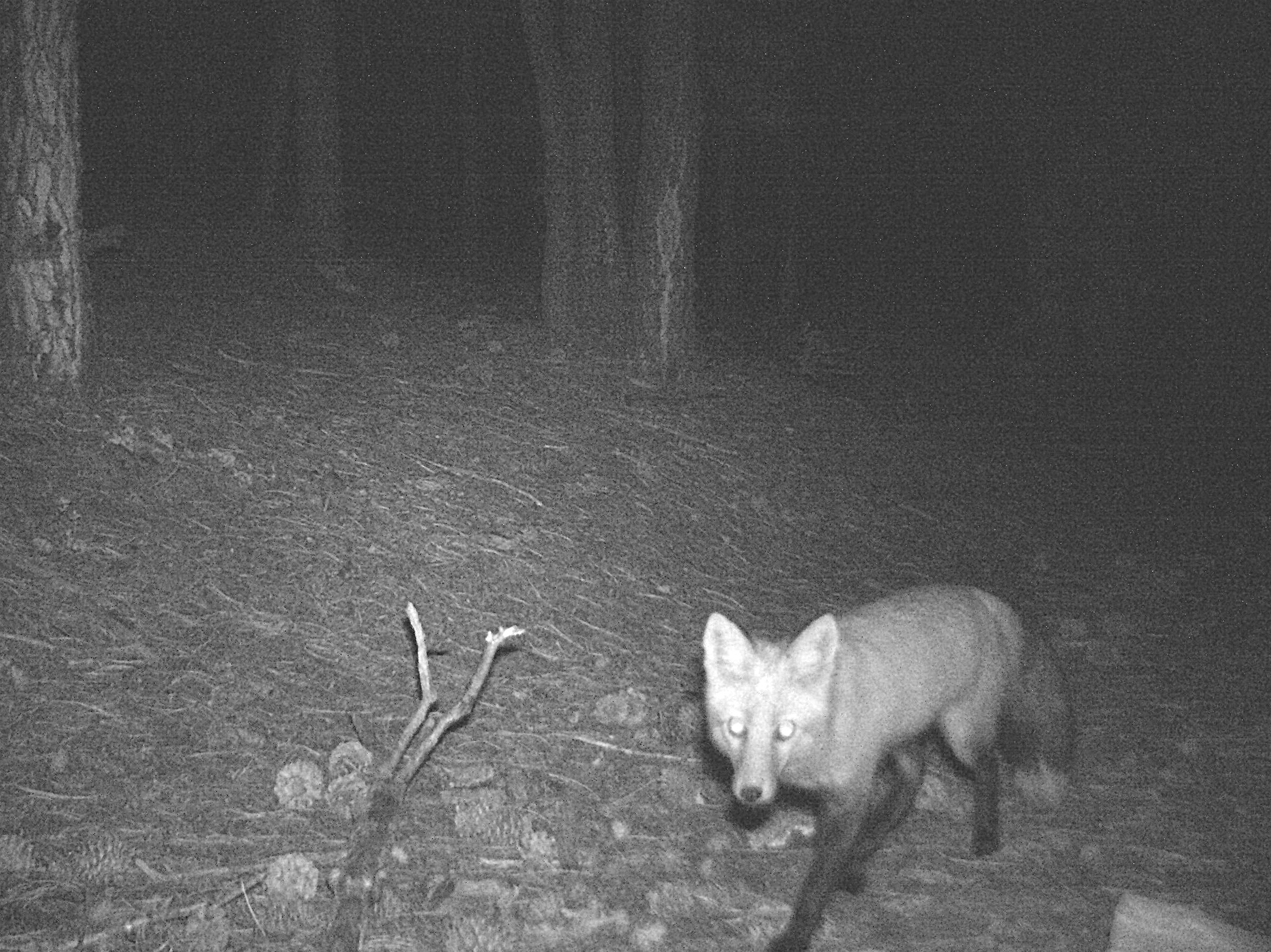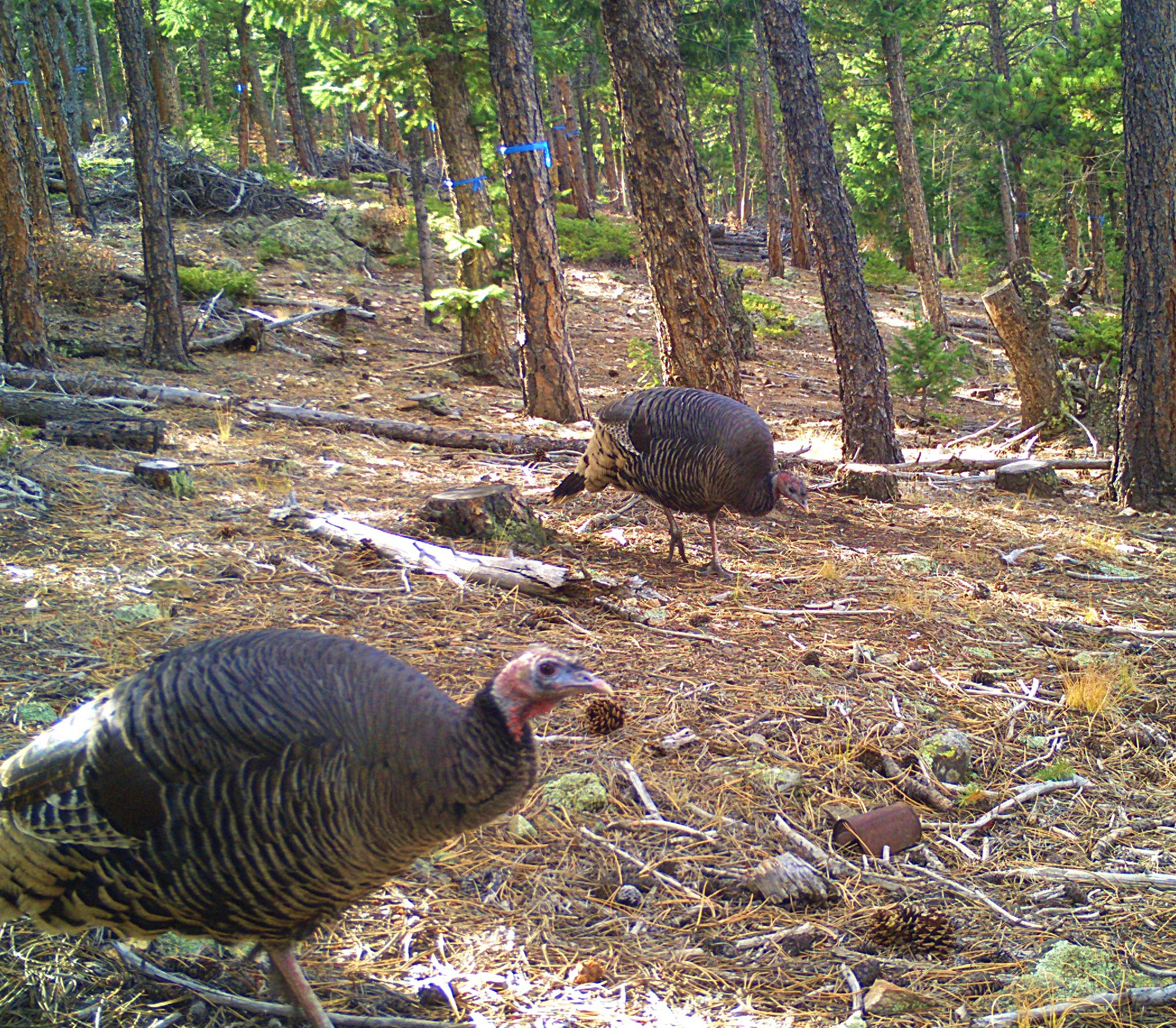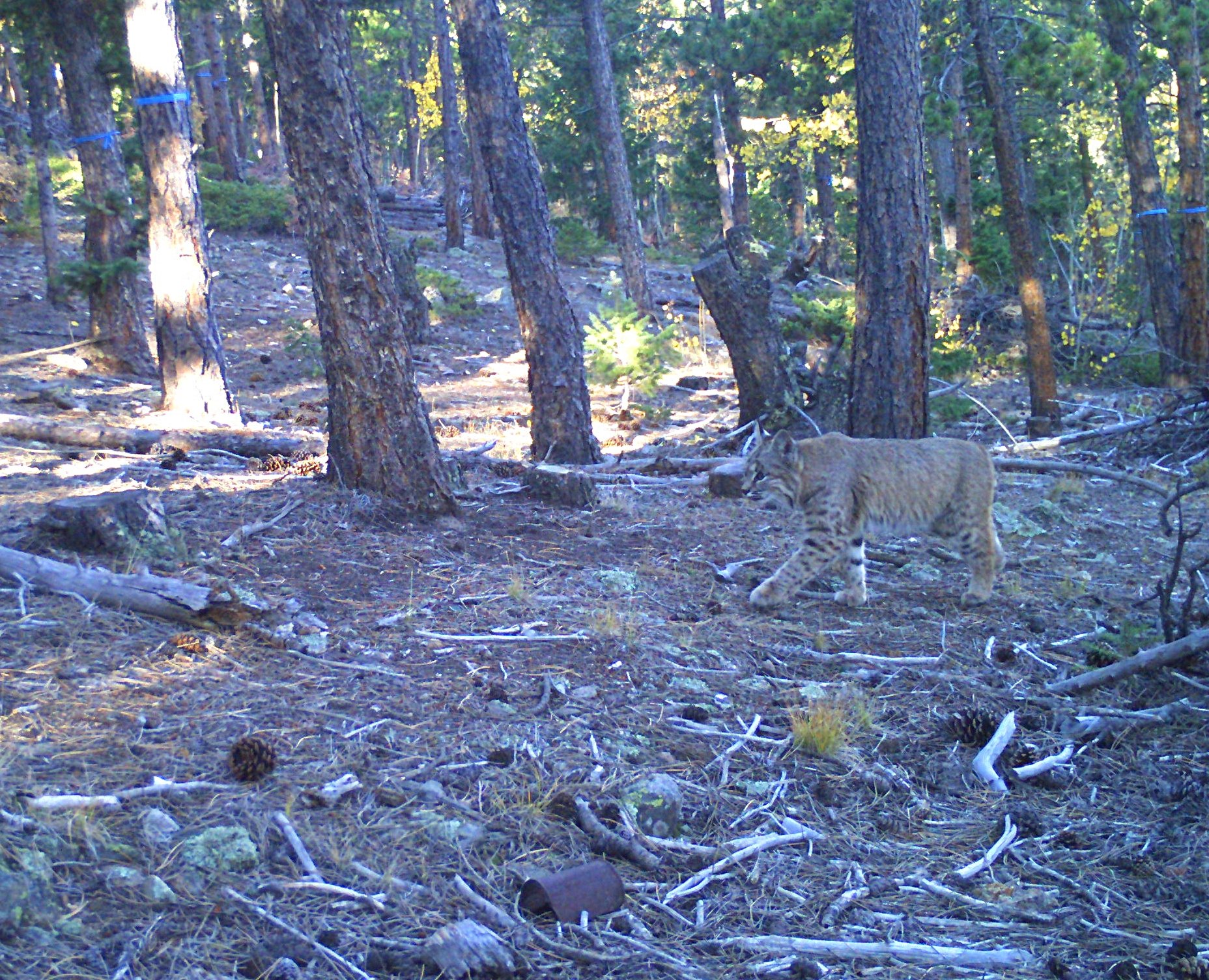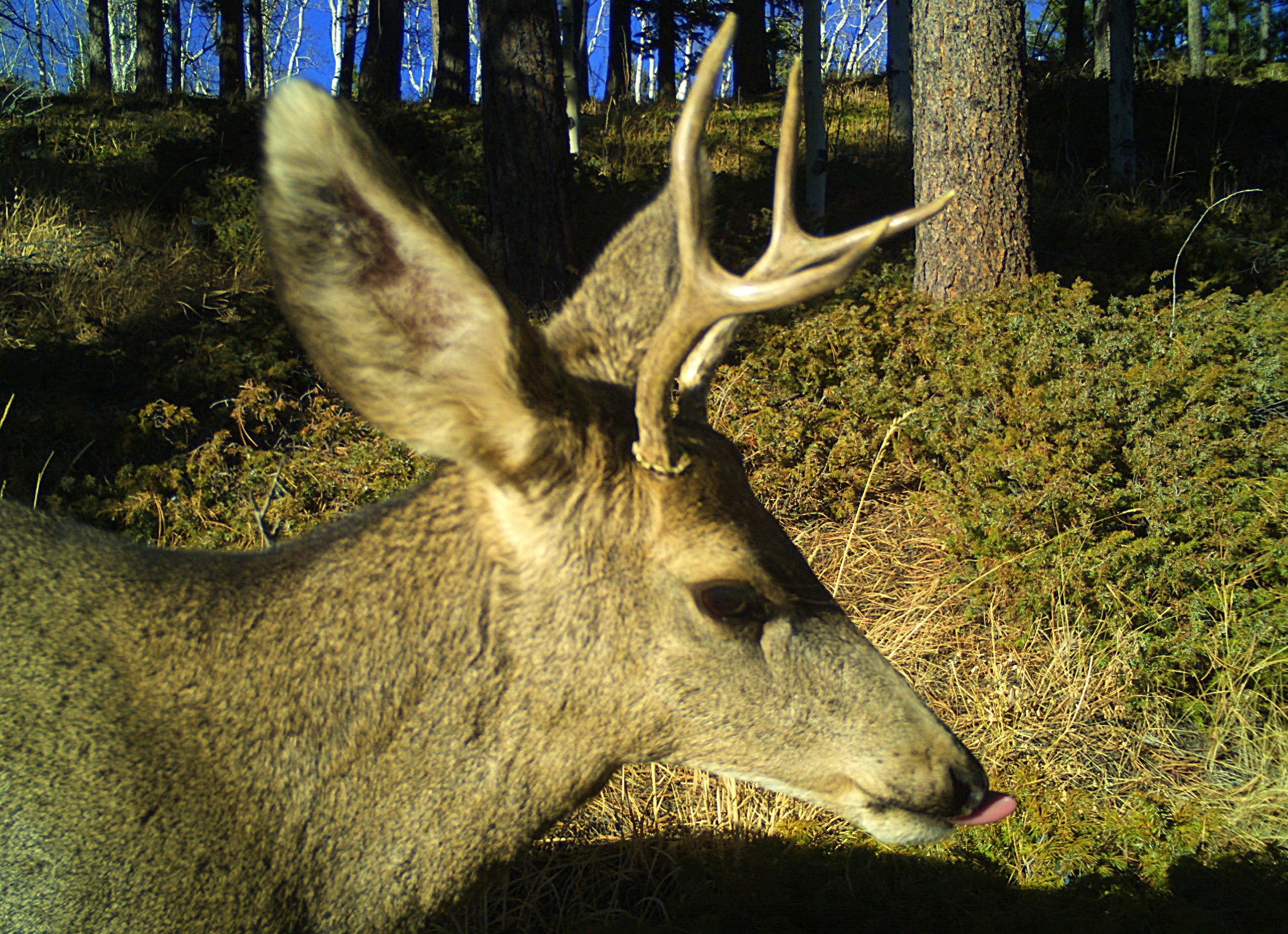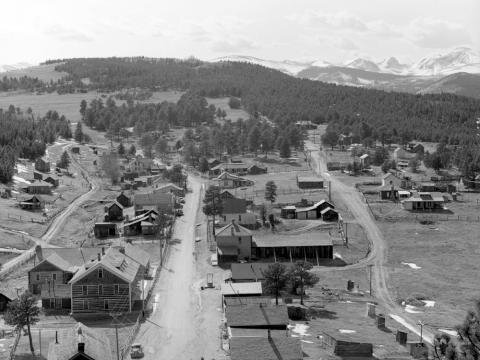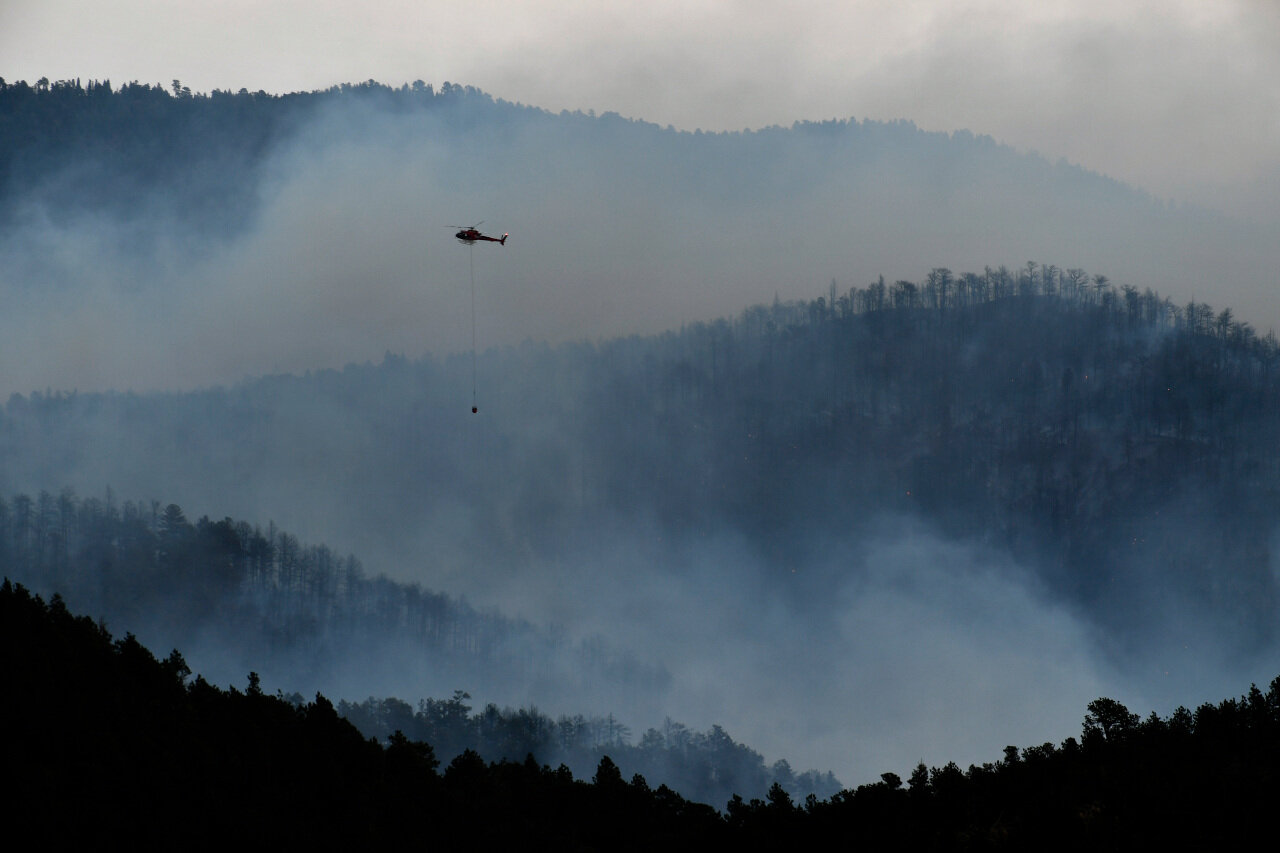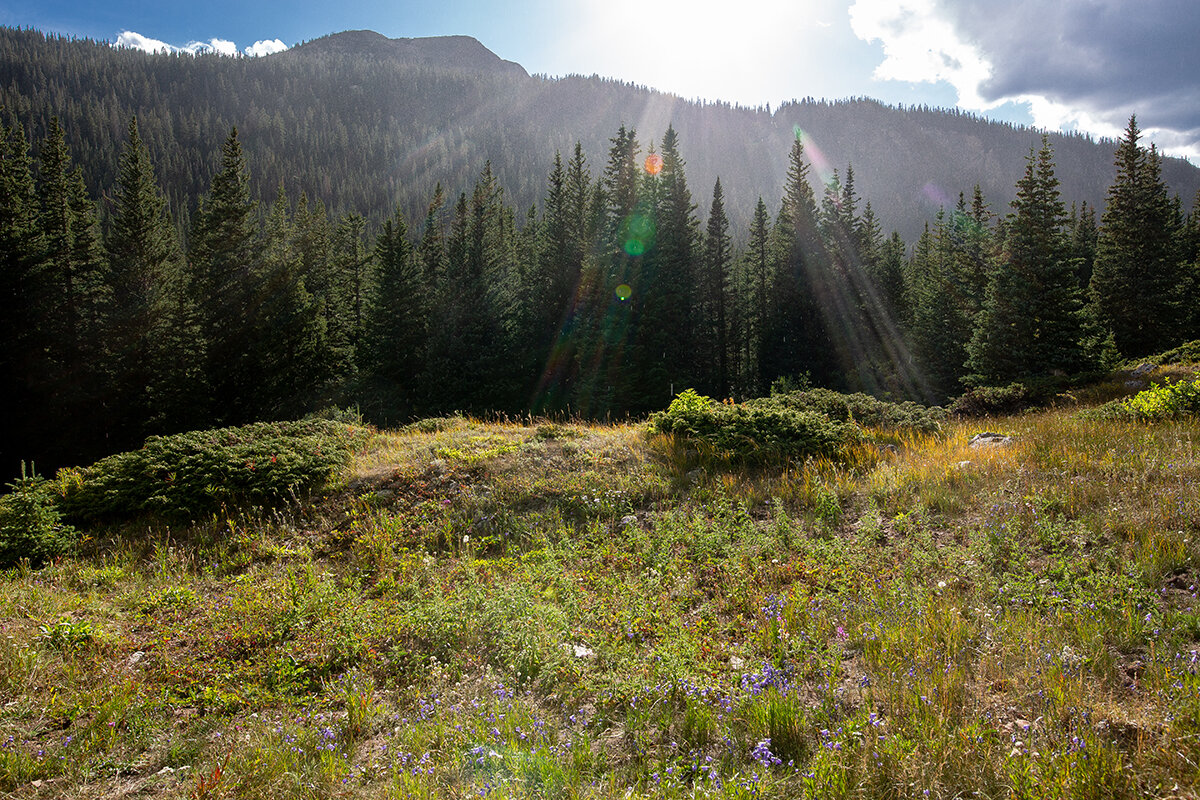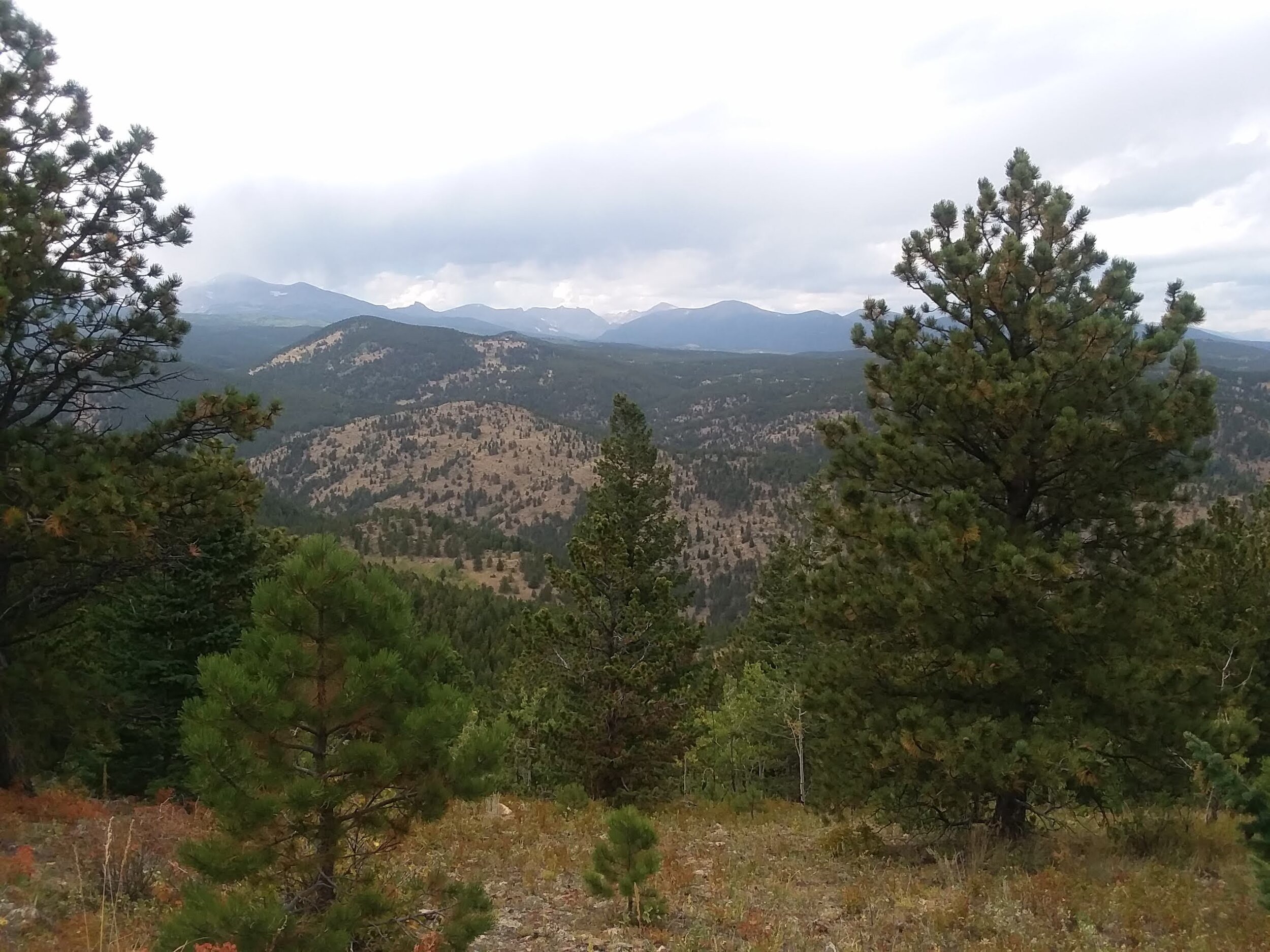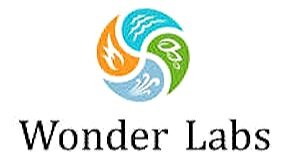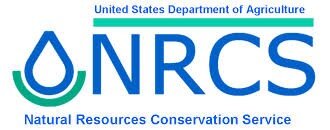Gold Hill Collaboration on Wildfire & Forest Health
Images of wildlife from camera traps at the two forest restoration project sites, and historic and current images of Gold Hill.
OBJECTIVES:
The USDA’s Natural Resource Conservation Service and the Colorado State Forest Service are implementing a locally tailored forest management plan on 100 acres of privately-owned land adjacent to Gold Hill to reduce wildfire risk and promote forest health.
Our BWC led community science team will collect long-term data on bird populations, other wildlife (through wildlife pictures), and vegetation to understand changes to populations, diversity and resiliency before, during and after forest treatment.
Our team has learned from Gold Hill resident’s through a survey, interviews and several community conversations in summer 2021 on resident driven strategies to catalyze wildfire risk reduction in Gold Hill. We also hosted nature journaling, forester hikes and conversations, and other events to make forest management plans more transparent and allow community members to gain a better understanding of the nuances of their forest management plans that are grounded in forest ecology restoration.
Support Forest Health through Management
Forest Restoration Management Plans from Summer 2021 and 2022
Forest Managers’ Presentation
On June 22nd, 2021, the Gold Hill Fire Department and The Boulder Watershed Collective were thrilled to host this event to introduce Gold Hill residents to the Natural Resources Conservation Services (USDA) and Conservation District foresters working on the wildfire mitigation project. Foresters discussed the technical components that inform which trees are cut where and how/why those choices are made, and linked this to local forest ecology and restoration. Community members then posed questions and comments for the foresters.
Monitor Bird & Wildlife Populations
Preliminary Bird Monitoring Report
BWC initiated this bird monitoring in spring 2021 to collect baseline data prior to forest restoration. These data will help to understand the effect of forest treatments on breeding avian populations and will inform future management decisions. The data will evaluate bird populations in denser forests (pre-restoration) and how more open forest structures may impact avian communities (post-restoration). Monitoring will be conducted annually to capture the long-term effects of forest restoration treatments on bird communities of the mixed conifer ecosystem.
Host Community Conversations, Hikes & Explore Next Steps
Masters of the Environment Final Report & Next Steps
After many months of interviews, conversations and a survey in 2021, our CU Masters of the Environment student collaborators created this final report. This report provides a synthesis of these conservations and perspectives to better understand community dynamics, forest management and wildfire risk perceptions, and visions for a fire-adapted Gold Hill.
Community Visioning Event Summary - Story map
Explore the following story map created to highlight the projected (pathway as usual) and desired future conditions of wildfire preparedness and adaptation that Gold Hill residents mentioned in our August 2021 Community Visioning Event.
learn as you ‘hike with a forester’
In these videos, you will hike with local Colorado forester, Ben Pfohl with the Colorado State Forest Service through Gold Hill’s forests, and learn about Ponderosa Pine forest restoration and some of Colorado’s conifer trees.
Project Background
Gold Hill - CO, a small mountain community rich in history with a strong sense of place, is at risk of wildfire. No one knows this more than the residents who live there. As a result of recent wildfires, including the Lefthand (2020), Calwood (2020), and Fourmile (2010) fires all posing significant risk to Gold Hill and watershed health, residents are invested in bold steps to better prepare the town for future wildfires. The Gold Hill Fire Department, Gold Hill Town Meeting, a team of graduate students from CU’s Masters of the Environment (MENV) Program, and the Boulder Watershed Collective, along with a myriad of other partners, aim to better understand how to increase Gold Hill’s future resiliency to wildfire. Our team knows that sustainable solutions require a deeper understanding of both (1) ecosystem changes and forest health, and (2) community perspectives, values and innovative strategies. As part of this holistic approach, BWC has initiated a 100-acre forest restoration project on private land adjacent to Gold Hill. Community scientists will monitor forest health indicators, such as birds, wildlife and vegetation, to understand long-term ecosystem trends related to the restoration project. Additionally, our team seeks to better understand community wildfire risk, ecosystem values, the factors that influence forest management, and community driven education strategies.
Image of how social and Ecological systems are intimately connected. image Adapted from hurst Et al. (2017).
Questions or Comments?
Collaborators and Funders
Living with Fire Design Challenge
This work was supported by Wonder Labs as part of Reimagining 2025: Living with Fire Design Challenge Award.
We recognize that the project area and town of Gold Hill sit upon land within the territories of the Ute, Cheyenne, and Arapaho peoples. Further, we acknowledge that 48 contemporary tribal nations are historically tied to the lands that make up the state of Colorado.
